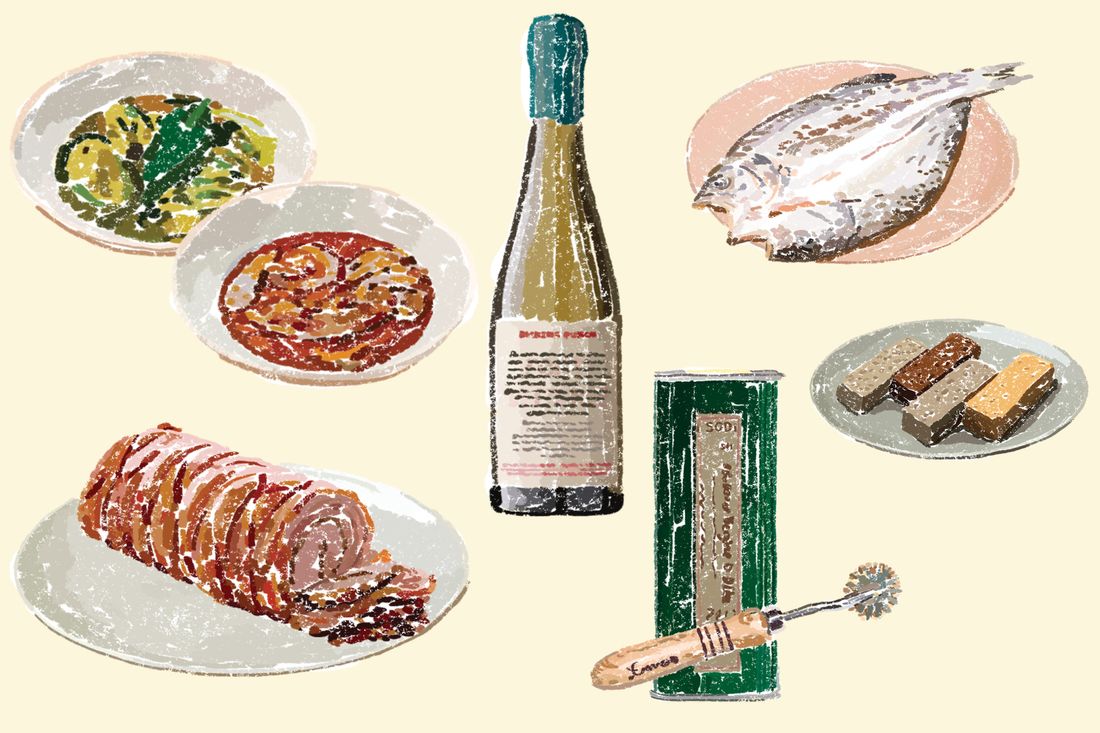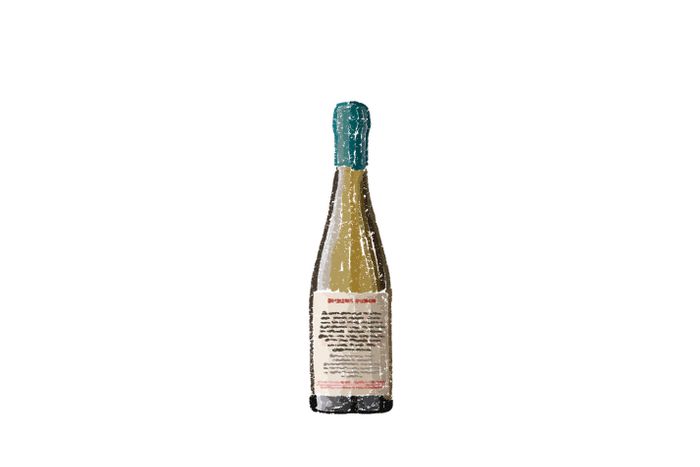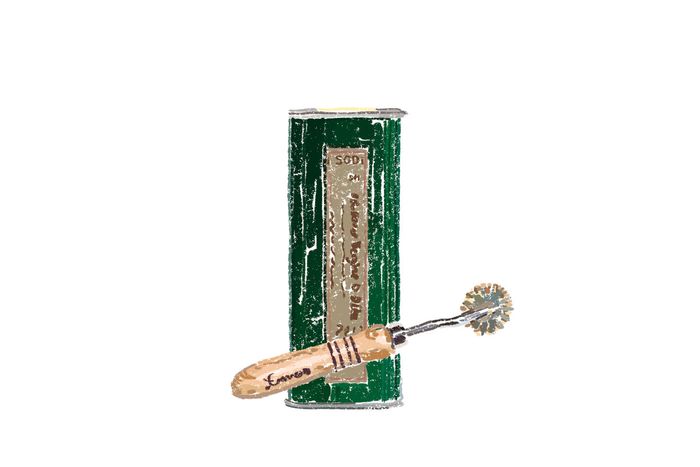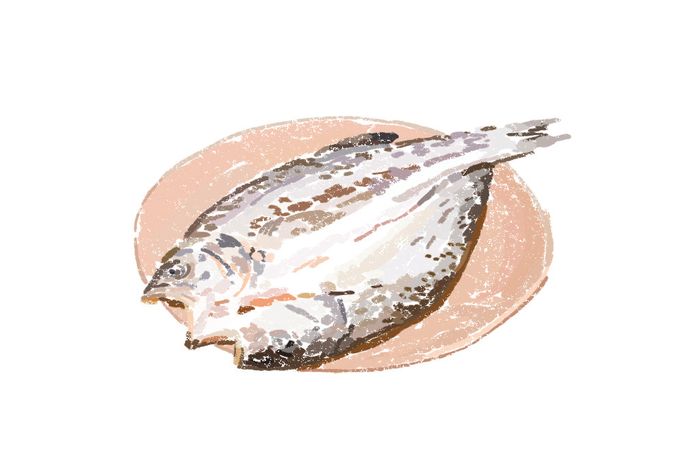
Whether you’re browsing Square sites or makeshift Metro shelving, here’s what you’ll find at the city’s latest fish butcher, pasta shop, and bar turned bakery.
A One-Stop Shop for One-of-a-Kind Items
Dame Deli & Bottle Shop, 85 Macdougal St.
On their road to opening an English-inspired seafood restaurant, Patricia Howard and Ed Szymanski have run two pop-ups (modern British tasting menu, counter-service chippy) and were on the brink of debuting a third (small-group private dining) when the rising COVID-19 infection rate made them reconsider. Anticipating a dining public resigned to home cooking and takeout, they’ve turned their temporary location into a retail showcase for their favorite purveyors, Szymanski’s prepared foods, and a portion of the wine collection they’ve slowly amassed. Their guiding principle: “We have to love it.” And it helps if the product is a retail exclusive. That applies to breads from Mel bakery, flour tortillas from Yellow Rose, and exotic citrus and mixed radicchio from restaurant supplier Natoora. The main draw, though, is Szymanski’s seafood creations — a part Russ & Daughters, part Spanish conservas roster of mussels in curry oil, whitefish salad, and squid in tomato oil, all meant to be consumed with Dame-bought baguettes, pasta, or rice. Wines are priced closer to liquor-store than restaurant levels. “It’s kind of fun to run a wineshop,” says Szymanski. “And it helps to have cash flow coming in.”
A Pop-up Pasta Shop
MP 30 Rock, 55 W. 49th St.
Missy Robbins long dreamed of opening a pasta shop; COVID-19 sped things up. The side project that began as a snaking line out the front door of her Williamsburg restaurant Misi has grown over several months into a two-truck delivery operation serving the city and its ritzier suburbs, ferrying staples like Trapanese sea salt and Pantellerian capers, Vermont apples and Long Island bitter greens, plus mafaldini-and-pink-peppercorn pasta kits to self-isolating regulars in the throes of restaurant withdrawal. The suburban focus makes sense: Robbins’s “From the Garden” bags are so amply packed (yes, that’s a raw chicken in there as well as a whole fish) they may require a garage fridge or at least a Sub-Zero. But at the Rockefeller Center pop-up that Robbins and her business partner, Sean Feeney, opened as an experiment in physical retail, all the pantry items and pasta-kit components are available à la carte, alongside vegetable contorni, gelato, and heat-and-eat feasts like Pecorino-crusted cutlets and flavor-packed porchetta. Sleek and minimal, the shop is more early Dean & DeLuca than vintage Balducci’s and will be open through January 7. Take a socially distanced gander at the tree while you’re there.
A Turned Bakery-Plus
Fort Defiance General Store, 365 Van Brunt St., Red Hook
Shortly after the spring shutdown, St. John Frizell converted his Red Hook cocktail mecca into a contactless store, where he took online orders and left bags outside for scheduled pickups. The response was such that demand outgrew the constraints of the space, and next March, Frizell will transplant the business and most of its distinctive décor one block away, to the former CopperPot location. The triple-lot street frontage will accommodate plenty of outdoor seats, and Frizell envisions the back room becoming an actual indoor bar one distant, post-vaccine day. But most important, he plans to transform some office space into a bakery prep area and build on the shop’s current offerings of sourdough loaves, English muffins, vegetable focaccias, and cookies and cakes. He considers the produce refrigerator, not the backbar, the heart of the new Fort Defiance. Even so, he will always be a cocktail man at heart, and once you’ve selected your locally grown fruits and vegetables, you should add on a bottled cocktail or two, like the cognac-and-rum-spiked Dickens Punch, which can be enjoyed hot or cold and is based on a recipe Charles Dickens wrote in 1847.
A Pantry With a Spanish Accent
Saint Julivert Despensa, 264 Clinton St., Cobble Hill
Alex Raij and Eder Montero’s stylish seafood bistro first evolved into a “beach shack” with fish tacos and lobster rolls and now into what Raij calls a “bodega with benefits,” a place to stock your kitchen while you wait for your takeout. Next to the obligatory milk and eggs, you will find value-added items prepped by the kitchen crew: meal-starter romesco and pesto sauces; seafood chowders and winter soups; and blocks of compound butters, in flavors like vanilla rose and mole, meant to be slathered on bread with anchovies, or folded into pasta and rice, or even to replace supermarket sticks in home baking. Raij dresses fresh cheeses with flavored oils and boutique salts and tints Christmas cookies with fig leaves. What she doesn’t cook she sources according to her own whims and appetite: Tinned chargrilled-seafood conservas come from her favorite restaurant in Asturias, and GoldRush apples (“They were a revelation to me”) from the farmers’ market. The corner location once housed a neighborhood institution known as the Little Red Deli. “Everyone said that it had the best cheese, the best charcuterie, the best sandwiches,” says Raij. “Now it’s that again.”
An Online Market With Old-World Connections
I Sodi, 105 Christopher St.
There’s nothing remarkable about the olive oil stocked at most restaurants turned groceries — unless, that is, the olive oil in question is new harvest, derived from the owner’s family’s trees back in Tuscany, and shipped in such small quantities it might be sold out by the time you read this. “Growing conditions were very difficult the last five years,” says Rita Sodi, who has on occasion served the Sodi family oil at her West Village restaurant. “This year, they had enough to send to me.” It’s one of a small selection of items she has started selling for local pickup and delivery, along with sundry pasta sauces and large-format bottles of the Negroni variations that made I Sodi’s bar a citywide destination. She also has a line on Italian craft imports like linen napkins and place mats made by a vanishing breed of Tuscan housewives, and one-of-a-kind pasta cutters from Sardinia (in case those sauces stoke your ambitions). The “shop” is largely an online operation run from an office at sister restaurant Via Carota, and except for the booze and the meat sauce, everything can be shipped nationwide. “We even sent some stuff to Hawaii!” Sodi says. “I was so excited.”
A Fishmonger Who Ages Fresh Fish
Noz Market, 1374 Third Ave.
With their tiny, cloistered rooms and interplay between chef and diner, the city’s high-end sushi omakase bars were especially vulnerable to pandemic restrictions. But the owners of Sushi Noz adapted by pivoting to delivery and takeout, a service that “became our bread and butter,” says partner David Foulquier. When the bakery next door closed, the team took a short-term lease on the space to expand the delivery kitchen and start selling Japanese and local seafood and other ingredients to a clientele happy to assemble sushi in the comfort of their own homes. So in addition to splurging on o-toro, Hokkaido sea urchin, and whole king crab, customers can stock up on seaweed, wasabi, sushi rice, and pickled ginger, plus prepared foods like house-cured bottarga and a smoked king salmon Foulquier says rivals New York’s appetizing royalty. You can buy tamago or a dozen fresh Jidori eggs and snack on temaki while you wait. What really sets this “fish butcher” apart, though, is the aging and curing techniques that chef Nozomu Abe applies to raw seafood. “Noz lets the fish tell him what it needs and what it’s calling for,” says Foulquier. “That’s what separates us from Citarella.”
*A version of this article appears in the December 21, 2020, issue of New York Magazine. Subscribe Now!










